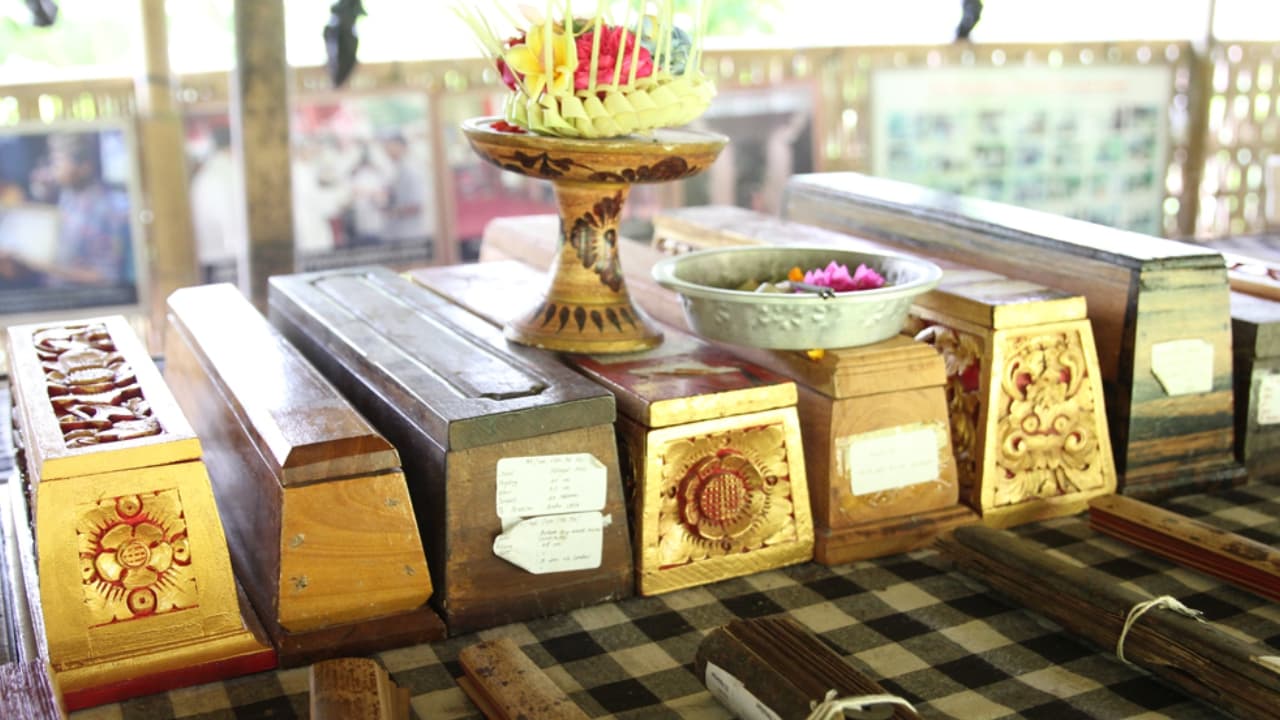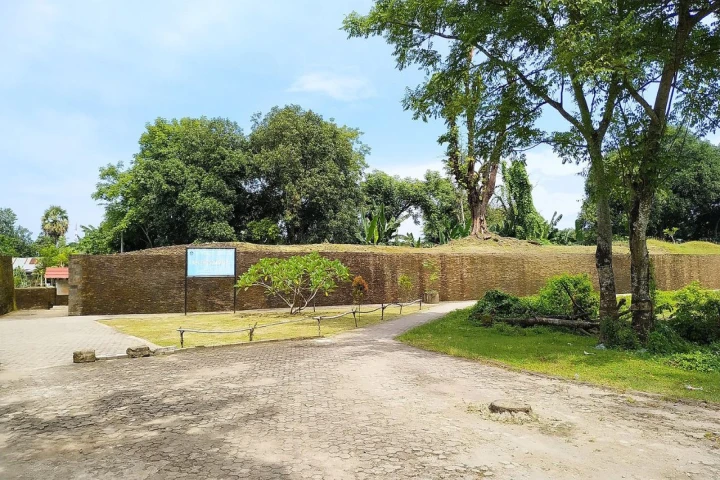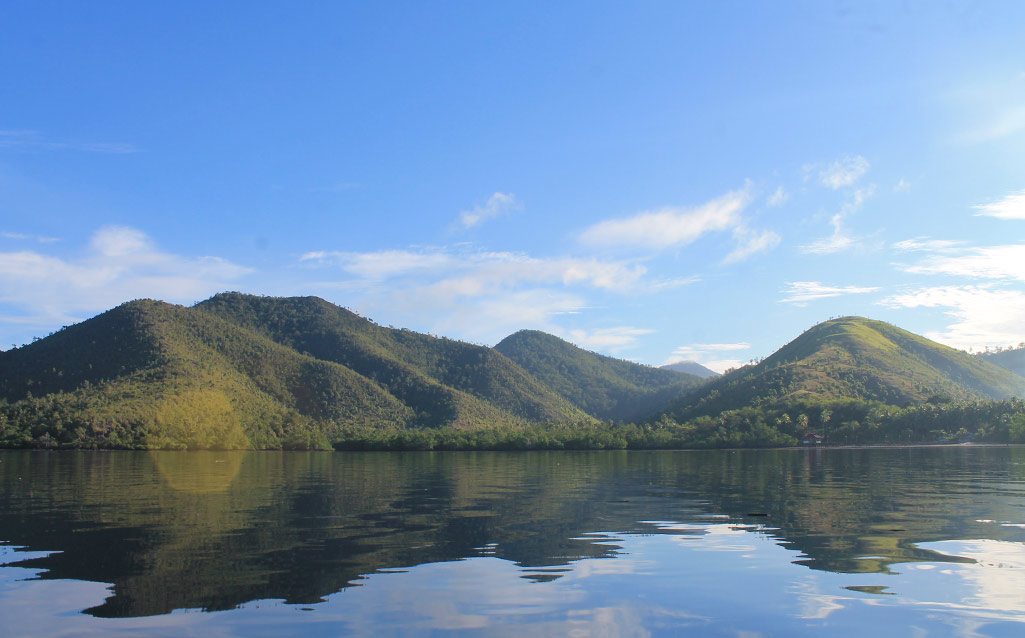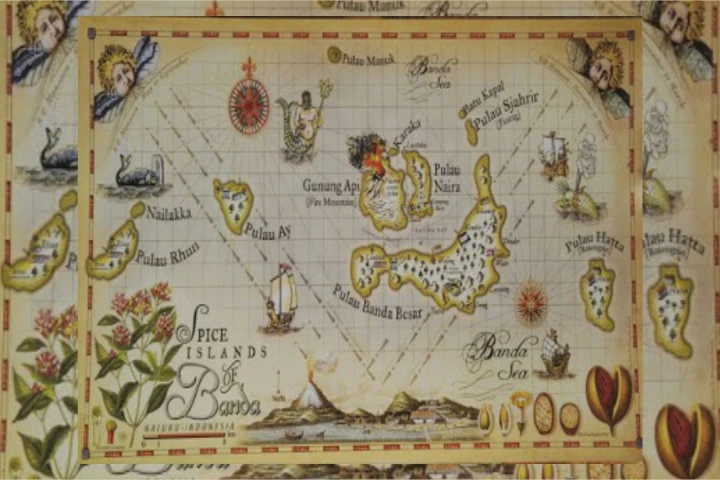
Nusantara: The Mother of Spices
Nusantara is a blessed land. God chose this land as the first place on earth to grow spices. In his book Suma Oriental que trata do Mar Roxo até aos Chins [Suma Oriental: An Account of the East, from the Red Sea to Japan], Tome Pires told the story during his stay in Nusantara in the 16th century:
“The Malay merchants say that God made Timor for sandalwood and Banda for mace and the Moluccas for cloves, and that this merchandise is not known anywhere else in the world except in these places; and I asked and enquired very diligently whether they had this merchandise anywhere else and everyone said no.”
Nusantara is a big house for the world’s biodiversity. Around 11 percent of the world’s plants live in the tropical forest of Nusantara. There are more than 30.000 species; some of them are used and known as spices. It can’t be denied that Nusantara is the Mother of Spices who gave birth to the King of Spices, clove, nutmeg, and sandalwood, the leading commodity of the world spices which once had a higher value than gold in their glorious era. Run Island in Maluku, rich in nutmegs, was even exchanged with Manhattan Island, where New York is now.
The clove tree (Syzygium aromaticum) is endemic to Ternate, Tidore, Moti, Makian, and Bacan. The nutmeg tree (Myristica fragrans) is endemic to Banda Island. Other significant aromatic spices, coming from the sap of endemic trees from Sumatra, are benzoin (Styrax benzoin) and camphor (Cinnamomum camphora and Dryobalanops aromaticum). Other significant commodities like cinnamon (Cinnamomum burmannii), pepper (Piper nigrum) are produced in a considerable quantity in Sumatra. So does sandalwood (Santalum album) mainly grows in the islands in the eastern part of Nusantara.
Based on the historical record, spices were more than a mere commodity. They brought value and lifestyle to the global civilization. Spices played an essential role in human life that led to economic, socio-cultural, and political developments locally and internationally. Merchants risked their lives and properties to market the spices; cooks concocted spices to give tastes to their dishes; traditional healers concocted spices to make medicines; the kings sent expeditions to sail across the oceans to get the spices; one diplomacy to another was held; human relations became global and the history of human civilization was established.
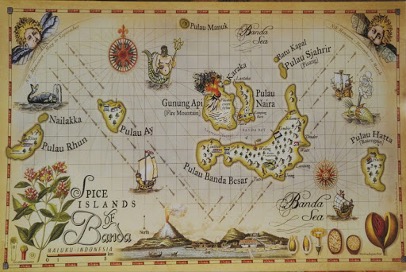
Nutmegs and Cloves, Endemic Plants of Nusantara (source: http://www.collin-key.com/story-of-banda-nutmeg/)
Spices and The Global Trade Routes
Long before Europe came to Nusantara, the Spice Routes were our ancestors’ routes to establish relationships among islands, tribes, nations by bringing spices as the value to grow friendships, cultural assimilations, and diplomacy in every stopover since thousands of years ago. The routes then eventually connected Nusantara to the world. The arrival of Austronesian speakers in Nusantara around 4.500 years ago by boats marked the first exchange of spices and other commodities among islands in East Indonesia. Their cultures gave rise to the maritime culture that shipped the spices to South Asia and East Africa.
A trace of agarwood was found in India. Clove and cinnamon from East Indonesia had existed in Egypt and the Red Sea. Our ancestors brought spices to Southeast Asia, Champa, Kamboja, and the metal culture spread from Dongson (Vietnam) to East Nusa Tenggara, Maluku, and Papua.
Since the beginning of AD, the Spice Routes had linked India to China. A record stated that the Javanese sailors landed in China in the 2nd century AD. The Chinese monks used Nusantara ships to learn Buddhism in Suvarnadvipa or Srivijaya and India. The great kingdom of Srivijaya, Hindu Mataram, Singhasari, and Majapahit put spice trades as the main path of interaction that linked Nusantara to Southeast Asia, China, South Asia, West Asia, and East Africa.
Therefore, we can’t deny that long before the Europeans conducted trade activities in Southeast Asia, Nusantara traders had actively participated in world trade. The spices of Nusantara and Southeast Asia had been familiar to the Europeans long before they became familiar in Nusantara and Asia. The strategic position connected the Indian Ocean with the South China Sea, East Asia with West Asia to the Middle East, Africa, and Europe, leading Nusantara to connect the world’s trade network. In his book Spice, the History of a Temptation (2005), Jack Turner stated:
“No spices were more travelled or more exotic than the cloves, nutmeg, and mace of the Moluccas. Serve to the visiting monarchs in a glass of spiced wine, all that can be known with any degree of certainty is their origin. After harvest in the nutmeg groves of the Bandas or in the shadow of the volcanic cones of Ternate and Tidore, next, most likely, they were stowed on one of the outriggers that still flit between the islands of the archipelago. Alternatively, they may have been acquired by Chinese traders known to have visited the Moluccas from the thirteenth century onwards. Moving west past Sulawesi, Borneo, and Java, through the straits of Malacca, they were shipped to India and the spice-marts of Malabar. Next, Arab dhows conveyed them across the Indian Ocean to the Persian Gulf or the Red Sea. At any one of a number of ancient ports – Basra, Jiddah, Muscat, or Aqaba – the spices were transferred onto one of the huge caravans that fanned out across the deserts to the markets of Arabia and on to Alexandria and the Levant. Only in Mediterranian waters did the spices some at last into European hands.”
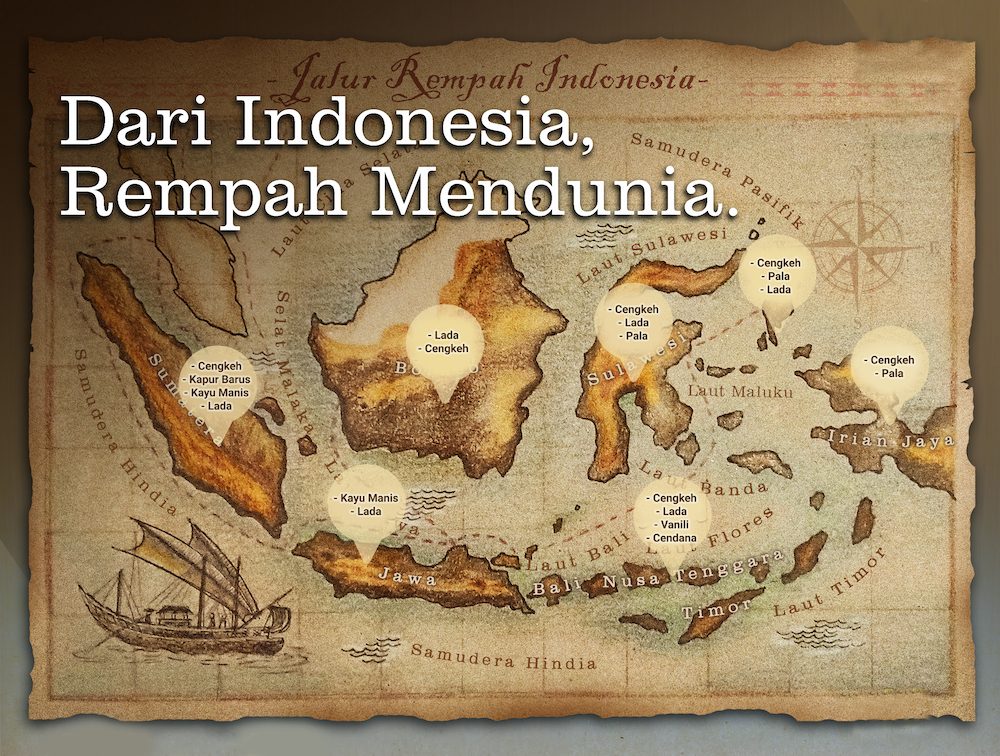
“Sejarah Rempah” by Anton Rinawang, the Appreciation Winner of the General Category, Spice Visual Competition/the Spice Routes Directorate-General of Culture the Ministry of Education and Culture 2020
The first evidence of Nusantara’s role in the trade of the Indian Ocean came from a Greek astronomer named Claudius Ptolomeus, who lived in Alexandria, Egypt, in the 1st century AD. He wrote Guide to Geography, an ancient map involving a city called Barus, an ancient port city that was essential to Sumatra and the world. This ancient metropolitan name reminds us of a precious aromatic spice commodity hunted by foreign countries (Greece-Roman, Egypt, Arab, China, Hindustan)—camphor (Guillot, 2014). Another ancient evidence of the spice trade came from Terqa, a site in Mesopotamia (Syria), where an archaeological excavation discovered a pot filled with cloves in the warehouse of a modest house in 1721 BC (Liggett, 1982).
Concerning this matter, a celebrated historian in the Asian study Anthony Reid stated in his book Southeast Asia in the Age of Commerce, 1450-1680: Volume 2, Expansion and Crisis (1993):
“Cloves and occasionally nutmeg and mace were mentioned in commercial records of Cairo and Alexandria as early as the tenth century, but they remained extremely rare and expensive in Europe until the late fourteenth century. The Chinese also knew of clove and nutmeg as early as the Tang dynasty but used them sparingly before the fifteenth century.”
Reputedly, a Han emperor from China (the 3rd century AD) required the high officials to mumble cloves in making a formal appearance. Although some Chinese sources in the 14th century had known the origin of cloves from Maluku, only a record dated 1350 truly wrote that the Chinese Jung immediately sailed from China to the area. The collection and transportation of cloves from Maluku to the western world of Nusantara were fully managed by the Malay, Javanese, Bugis, and Maluku people. Malay, Arab, Persian, and Chinese traders bought spices from Nusantara, and then the spices were brought by ships to the Persian Gulf and distributed to all of Europe through Constantinople (Istanbul), the area of Turkey today—reaching the price of 600 times (Turner 2005).
Tempted by the price of spices in the world’s market, since the 15th century AD, Europeans were triggered to find the area of the spice-producing islands, which led them to reach Nusantara. In discovering spices, they interacted and competed with various nations in the global trade network. In this century, the modern shipping system emerged, triggered by the competition of discovering the glorious spices in Europe, although they hadn’t found the exact place. The fragrance of Nusantara spices that changed the look of Europe from the feudal monarchy system to a modern country increasingly moved the world shipping competition. As a result, the areas of Nusantara started to be mapped clearly in the world trade network. Notes from world travelers who came to Nusantara witnessed the fragrance of Nusantara spices amid the world trade activities in Nusantara.
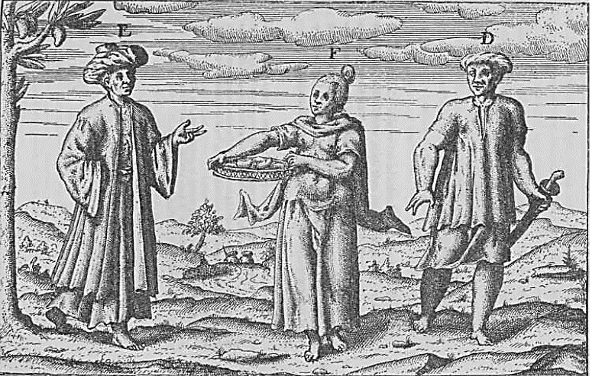
An image of a Malay merchant figure (D), South Asia (Tamil) (E), and a woman, coming from Gujarat (F), in Banten around 1596 (Rouffaer and Ijzerman, 1915 (Deerste Boek): 120-121).
The Spice Routes: The Cultural Routes
Nusantara spice trade left civilization traces in the forms of historical sites, cultural rites and gave rise to various cultural products inspired by the nature of Nusantara that was rich. People from different nationalities came to Nusantara in droves not only to trade but also to establish civilization. Started from Barus port in North Sumatra, that is estimated to be more than 5000 year-old by the experts, to the era of Nusantara kingdoms with the seaports, like in Lamuri, Padang, Bengkulu, Lampung, Banten, Jepara, Tuban, Gresik, Banjarmasin, Makassar, Bali, and Ternate-Tidore in Maluku—they were formed due to the spice trade.
Asia’s global spice trade axis, India–Nusantara–Tiongkok, left significant civilization traces through Indian to the Pacific waters. Located along the busiest maritime route in the world, from time to time, Nusantara had become a strategic area that was significant and the trade destination for millennia. No doubt, as a result of the heavy sea traffic to East Asia, the Middle East, Africa, Europe, and vice versa, a lot of civilizations interacted and exchanged knowledge, experiences, and cultures. As a result, it transformed into a meeting point among people across nations and a means of cultural exchange and understanding that united ideas, concepts, notions, and praxis that transcended the concept of space and time—brought together by the river, sea, and ocean.
The Spice Routes triggered the establishment of various knowledge and cultures that became the heritage of Indonesia and the world. Located in strategic geopolitics and geo-economic position between two continents and two oceans, Indonesia was a “global meeting point” and a “global melting point”. Because of spices, Nusantara became a place where people from different parts of the earth met, and it became a nursery and cross-cultural area that put together various ideas, notions, concepts, knowledge, religions, languages, aesthetics, and habits. Thus, the spice trade through the sea became a means of cross-cultural exchanges, and it gave a significant contribution to the establishment of world civilization.
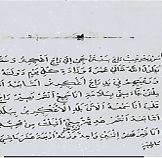
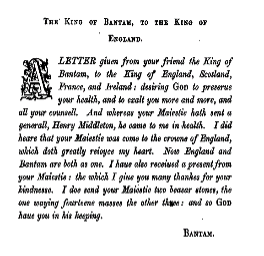
A letter of Banten Sultan to King James I and its translation in English by William Foster in 1933.
The Spice Routes as a Reference to The Cultural Diplomacy
In 2017, through the Ministry of Education and Culture, Indonesia pioneered a Spice Routes proposal as UNESCO world heritage. The submission of the Spice Routes as UNESCO world cultural heritage was based on the understanding that the Spice Routes are the routes to exchange cultures and knowledge that went beyond the context of space and time. Spice Routes can be seen as a Cultural Route, so it has a big opportunity to be proposed as UNESCO world cultural heritage by joint nomination between Indonesia and other countries, passed by the trade routes.
The history of Spice Routes from time to time was absolute proof that cultural diplomacy had been practiced in various sectors by individuals, communities, and countries. Therefore, learning from the Spice Routes dynamics in the past, it should be relevant if the Spice Routes can be a reference to search for the color of Indonesian diplomacy, which put forward interactions and warmth of dialogue in various fields and all walks of life.
The Spice Routes can play a role as a foothold in looking back multiple possibilities of cooperation among nations to brotherhood and global peace which prioritize the understanding among nations, respect, recognition of the cultural diversity and the heritage, have the spirit of justice, equality, and contribution among parties, and uphold human dignity.
The Spice Routes submission to UNESCO shows Indonesia’s intention to keep the trust that the world gives to preserve the heritage of human civilization. However, the Spice Routes is not Indonesia’s heritage; it’s the world’s heritage, so it is our responsibility to keep its sustainability and continuity.
The Spice Routes for The Future Well-Being
Making the Spice Routes a World Heritage and the reference of cultural diplomacy power to strengthen Indonesia as the world’s maritime axis is something to be proud of. However, it is not enough. Another reason to revive the Spice Routes is to remind the young generation how the Spice Routes formed Indonesia’s people, country, and civilization. Not to be trapped in the historical romance, reviving the Spice Routes means revitalizing the spice culture value and how to use it in the present time and future. We hope that there will be various creativities and innovations through spices that eventually will bring back Indonesia’s glorious time in the past to the present and future.
The memory of Spice Routes is expected to grow collective awareness and pride in the national identity and strengthen Indonesia’s diversity through cultural interactions among regions built thousands of years ago. Time has proved that the encounter of people in the port, for instance, became a chance to exchange information, knowledge, traditions, arts that can change individual or groups’ characters in the long term. Today we see how people in the Spice Routes’ points, including Aceh, Riau Islands, Medan, Jakarta, Semarang, and other cities seem to remain cosmopolitan.
Further, by reviving the Spice Routes today, it is hoped to grow people’s awareness of conserving, developing, and utilizing the Spice Routes cultural heritage as an asset to increase the physical and spiritual life of the people involved. We invite all the young generation to try putting the culture as a driver and perhaps an enabler of sustainable development and a means of manifesting the happiness and welfare of Indonesian society. Every individual, group, and institution can be actively involved and choose their roles according to their portions in reviving the Spice Routes.
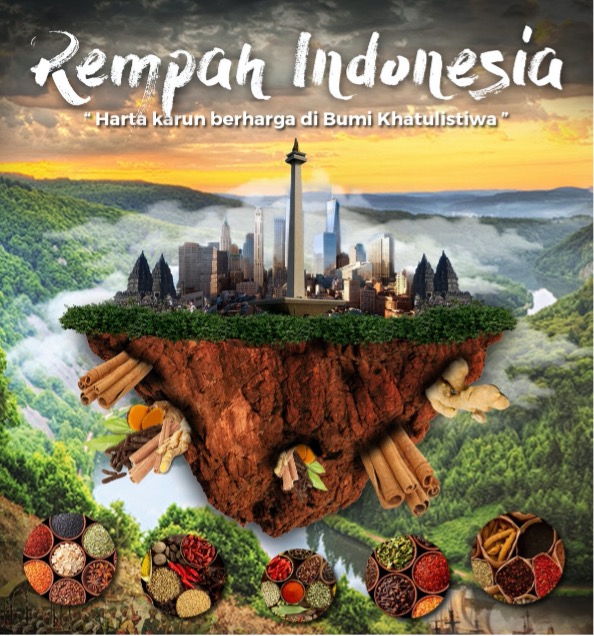
“Rempah Nusantara” by Nur Ridwan, the 1st Winner of High School Category, Spice Visual Competition/the Spice Routes Directorate-General of Culture the Ministry of Education and Culture 2020
Today, we know that, for instance, the Ministry of Tourism and Creative Economy started to develop tourism packages by using tangible cultural heritage and traces of Spice Routes. They also developed creative industries, including craft and fashion with patterns and natural coloring from spices. Other than that, the development of a gastronomic world which offers spice-based healthy foods and beverages to increase the immune system is a momentum in the era of the Covid-19 pandemic. We also know that the Ministry of Agriculture tries to revive the glorious time of Nusantara spices through the rejuvenation and expansion of spice plantations, strengthening downstream industry both the processing and marketing. The Ministry of Health also began to develop Nusantara spice-based herbal medicine and beauty.
Besides, we can develop various innovations and creations inspired by spice culture in the art and history industries. The products in the forms of films, music, dances, and architectural works are examples made by the young generations that can be linked to the exceptional Nusantara cultural heritage.
Reviving the Spice Routes is a Reconstruction Movement and Cultural Revitalization in broad dimension, thus moving the awareness of all elements to keep the heritage of diversity, realizing people’s welfare, and strengthening cultural diplomacy of Indonesia among other countries in the world. Therefore, the Spice Routes narration needs to be arranged collectively, using a world-oriented Indonesian perspective. Moreover, the historical fact about the glorious time of Spice Routes that had emerged since 4.500 years ago is a part of trade routes and cultural routes of human beings. Therefore, we need multidisciplinary approaches, for we can’t only interpret the Spice Routes from one point of view of history, archaeology, language, or culture.
Today’s Spice Routes must be realized collectively, reaching various aspects of life that haven’t been reached before. The Spice Routes can give a unique perspective as an entrance to enrich the efforts of answering contemporary challenges, including resilience, climate change, poverty alleviation, equality, and other challenges.
Spice Routes is not mere heritage; Spice Routes is our future.
Translator: Dhiani Probhosiwi




